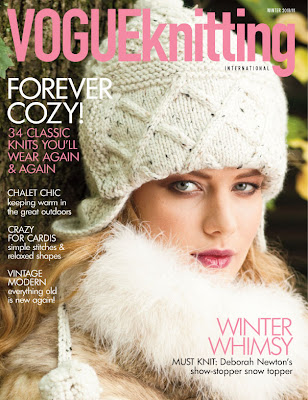Once a week I post interviews with interesting designers about their insights on their experience of working in the knitting industry. I’ve noticed that every designer makes their living in a slightly different manner bringing their own unique presence to the knitting world.
You can find Liz
here and
here on Ravelry.
Where do you find inspiration?
Inspiration is everywhere! I’m inspired by film, people on the street, architecture – but the thing that gets me the most charged up is activity. I want to design the garment or project that I would want to own for each specific purpose. For example, I’ve designed what I think are the “perfect” shoveling mittens (see my Knitter’s Mittens on Ravelry) and some very comfortable driving gloves (Gift Knit Kit Club Gloves).
What is your favourite knitting technique?
Right now I’m on a run of designing cables, so cables would be today’s answer. Tomorrow it might be colorwork, or edge treatments!
How did you determine your size range?
Primarily I design accessories and home accents, so I work in s,m, and l for men, women and children. Home goods tend to be one size.
Do you look at other designers’ work or are you afraid that you will be influenced by their designs?
I look at all the work I can. I love to see the way someone else chose to seam a project, or how they used color. Sometimes I see a technique that serves a design need in a unique way. Every day I learn something about knitting – sometimes what to do, sometimes what not to do, and sometimes what I aspire to do.
I don’t worry about undue influence. I’ve been wearing knitwear, watching people knit, and knitting myself for as long as I can remember. I assume all of my favorite garments have influenced me over the years, but like decorating my home, all the bits and pieces combine in unique ways in my own designs.
How do you feel about the so called controversy of “dumbing down” patterns for knitters? It’s an important question. Each knitting pattern should not represent a knitting class. Simultaneously, if a designer wants their pattern to be used and understood, unusual techniques and treatments require at least a cursory explanation. Occasionally knitters ask me about techniques they should have learned independent of my pattern, like how to knit in the round when presented with a pattern for a lace sock. I try to guide folks to instructions, books, and videos that will help them build their skills, but I don’t teach skills step by step in my patterns.
How many sample/test knitters do you have working for you or do you do it all yourself?
Those familiar with my blog know that my dear friend and amazing assistant, Colleen Croce, knits quite a few of my samples. At any given time, there are between 2 and 8 folks test and sample knitting for me. I knit all parts of each project myself, but I don’t necessarily end up with a garment. For example, on the last sock I designed, I knit the cuff pattern, 2 repeats of lace, and a heel turn. I did each of these at least 3 times, working toward the combination I saw in my head. Once I was happy, I passed it on to the test knitter to make sure that the pattern I wrote makes the sock I envisioned.
Did you do a formal business plan?
I created a career outline. I decided what I wanted my name to mean to knitters, and went about laying groundwork, designing patterns, writing and teaching classes, creating a Facebook page, creating a blog, and finally presenting my original patterns for sale. The next step will be publishing a book.
Do you use a tech editor? Yes. I like to think I don’t make mistakes, but my tech editor manages to find them just about every time I submit a pattern! She corrects them, which makes me look good, and I wouldn’t have it any other way.
How do you maintain your life/work balance?
I try to do one thing at a time. (I can’t multitask at all!) I have a supportive husband, which helps enormously. And my goofy dog, Max, insists I take frequent breaks to play with him. I’ve realized that I don’t have live my whole life in one day. Everything will wait its turn.
How do you deal with criticism?
In general, I appreciate it. I hate that I need critiques, as my inner perfectionist has a very loud voice. But when I receive valid criticism, I learn, and I’m glad someone had the guts to say what needed saying. On the other hand, I know my patterns, blog, and teaching style aren’t right for every knitter. Sometimes we just have to agree to disagree.
How long did it take for you to be able to support yourself?
It felt like forever! This is definitely not a “get rich quick” scheme. I would say about 5 years of 30-40 hours per week from deciding that it was my goal.
What advice would you give someone who wants to pursue a career in knitting?
I would encourage them to talk to several people in the industry, and get a sense of what facet works for them. Figure out if they want to be self-employed or an employee, whether they want to design, teach, write, sell... Do they want to work for a magazine, yarn shop, manufacturer, or something else? If they aren’t ready to dive in with both feet, wade in. This is a great career, and a terrific passionate hobby. One can become the other over time.




































